|
|
|
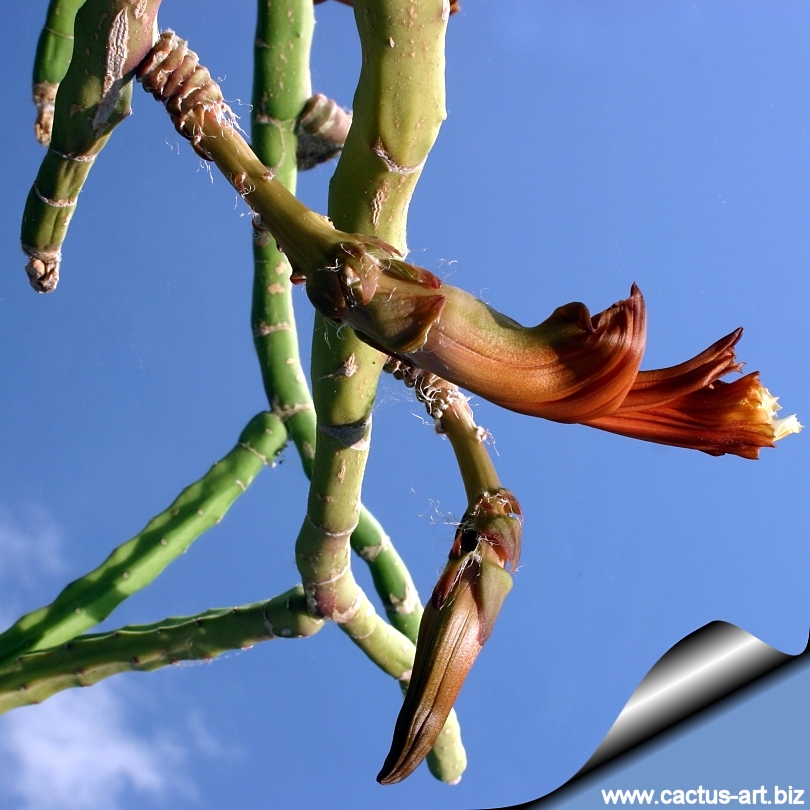
This is a MONTROSE form that originates in its regular form
from Cuba, Haiti and the Dominican Republic. Marvellously bizarre plant
for any collection of oddities.
|
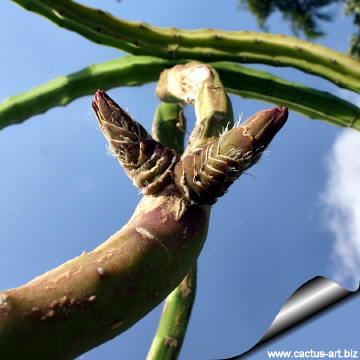 |
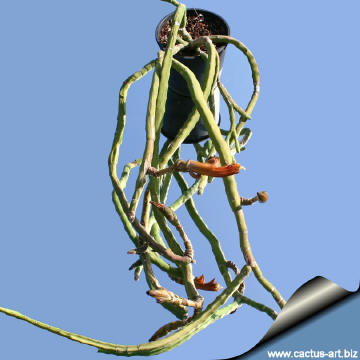 |
|
. |
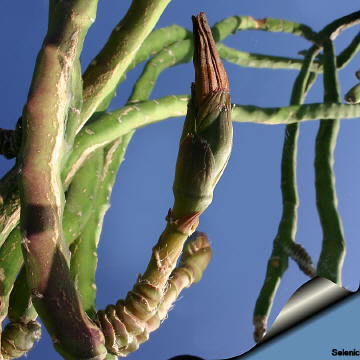 |
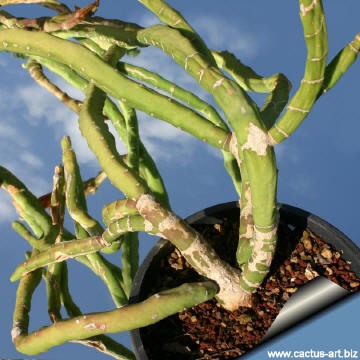 |
|
. |
 |
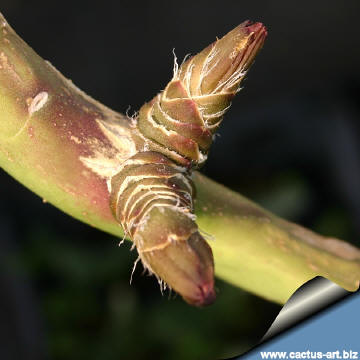 |
|
Propagation: by cuttings rootted in moss as an epiphyte.
|
|


Advertising
|
|
|
|
|
Family:
Cactaceae (Cactus
Family)
Scientific name: Selenicereus
urbanianus (Gürke & Weing.) Britton & Rose
Origin &
Habitat: Selenicereus urbanianus is
an inhabitant of the dump forest of Cuba, Haiti and Dominican Republic,
the monstrous form is probably a mutation originated in nursery
cultivation.
Conservation status: Listed in
CITES appendix 2.
Common English Names include: "Sausage Cactus",
"Monstrous Night-blooming Cereus", " Monstrous Queen
of the Night"
Synonyms:
- Cereus urbanianus
- Selenicereus maxonii
- Cereus paradisiacus
- Cereus roseanus
- Selenicereus paradisiacus
|
|
Description:
Selenicereus urbanianus forma mostruosa is a
sport of the Cuban epiphyte clambering species with spineless
swollen "sausage" stems in linked ( extruded ) sections that twists and
turns as it grows (rather than with 4-5 angles joints as in the standard
form) sometime with
aerial roots, stems usually light green but
occasionally turn purple throughout
Flowers: White nocturnal up to 20-30 cm long, but the flowers
buds usually abort, and it is very rare to see a fully developed flower.
When it forms flower buds it shouldn't be too dry, because these buds
grow fast and need enough water to develop. A negative detail about the
flowers is that they're only open a few hours at night, from about 9 pm
till about 3 am the next morning, being faded at dawn. The fragrance of
these flowers isn't very strong, and a bit indefinable. It comes closest
to cocoa-powder.
Blooming season: Flowers in late spring or early summer, only
blooms one night a year. The buds, grows slowly at first, but very fast
in their last few days.
|
|
|
|
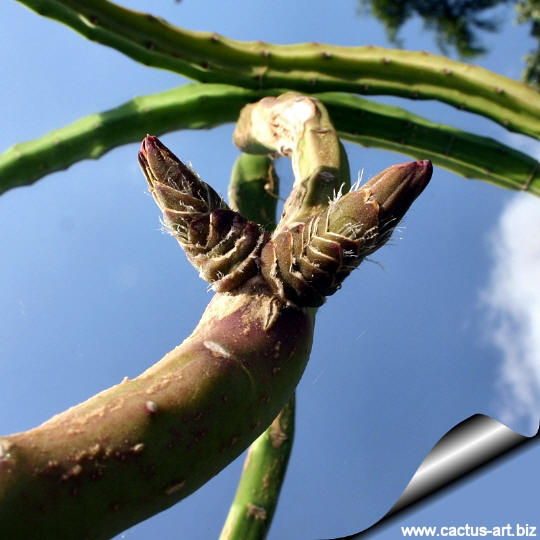
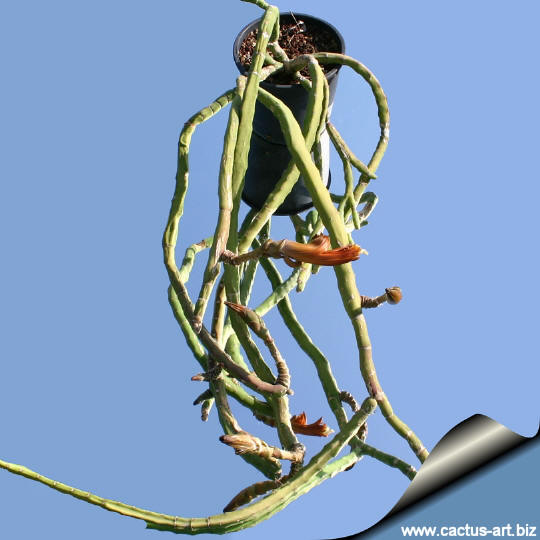
Cultivation: An easily cultivated, fast growing
epiphyte or
lithophytic plant. Needs a compost containing plenty of humus and
sufficient moisture in summer (though quite adaptable) it can be also
cultivated on split bark like Monstera. The plant is quite resistant to
drought condition, but shouldn't dry out totally otherwise it will turn
purplish brown and look unpleasant. Too much fertilizer will cause a lot
of lush growth at the expense of flowers. Should not be kept under 5º C
in winter (but can tolerate temperature as low as -5° C for short period
if completely dry). Perform best if grown in full sun. Extra light in
the early spring will stimulate budding. Suited for hanging pot The
adventitious roots -- those wiry white things -- are a good indicator of
whether or not it's satisfied with the amount of water it's getting.
They absorb ambient moisture and if the soil is too dry, they will reach
out to grab as much moisture from the air as they need. So don't prune
them off because you consider them unsightly.
The plant can be grown inside, but needs enough room - it will become
big, producing long stems, that have to be led along a lattice or
rolled-up like a garden-hose, really. In nature it climbs into trees.
Older plants in the greenhouse buds freely. |
|